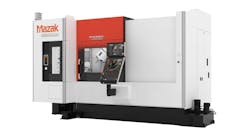Anyone working in a fabricating shop or machining operations comes face to face with a steady stream of science and technology every day. Speeds, feeds, calculations, and reactions — you have to be ready with the answer when the question arrives.
That doesn’t mean everything is easily understood. Some processes have been simplified to the point of pressing a button. And thus, one of the most critical questions — What’s the right process for a cutting project? — may stump even the most informed operators.
In the case of a basic, but essential, process like metal cutting, there are various choices competing for manufacturers’ investment. Kerf Developments Ltd. offers a full range of cutting technologies — profile cutting, oxy-fuel cutting, waterjet cutting, and high-definition plasma cutting — offered a tutorial in plasma cutting, rightly sensing that the technology is probably beyond the immediate understanding of many potential users.
It starts with a cutting gas — nitrogen, oxygen, argon, or even plain air. When the gas is heated to extremely high temperatures, the electrons in the gas molecules break free from the nucleus, turning the gas into plasma.
The plasma cutter directs that gas via a miniature orifice, which sends an electric arc through a gas stream. This heats the gas to the point at which it turns into plasma: The electrons collide and release energy, thus creating a very high volume of heat – and tremendous cutting capability.
Plasma cutting can be used to cut hard metals like steel, as with a plasma torch. In plasma cutting, inert gases as well as compressed air are blown at very high speeds and temperatures. On being heated, the gas is transformed into the plasma state.
This is generally referred to as the fourth state of matter, because its properties are distinct from solids, liquids or gases. The extreme heat that plasma has makes it an effective medium to cut right through metals. It also moves at a speed that is fast enough to blow all the molten metal from the cut.
Plasma Cutting Options, Advantages
The two main types of plasma cutters are the HF Contact and the Pilot Arc.
The HF contact type cutter is generally found in high-voltage, high-frequency machines. It ionizes the air at the head of the torch and initiates an arc.
In the pilot arc type plasma cutter, low current is used to generate a tiny, high-intensity spark within the torch. This creates a small, plasma gas batch that forms an electrical path right up to the head of the torch. This arc can be aimed at the work piece for the cutting process.
A plasma cutter is an effective tool for cutting thin and thick metal, as well as non-metal materials, due to its precision and the sharpness of the cut. This functionality makes them ideal for cutting angled and curved patterns on metal sheets.
Note, too, that current plasma cutting systems are safe, flexible, and energy-efficient. Their output is higher and they are environment-friendly too.
Generally, the plasma is diffused via a torch on the workpiece. Some plasma cutters are controlled by CNC, including built-in cutters and cutting tables. The computer and various software applications control the torch-head and provide sharp and clean cuts. Generally, these cutters are used for non-metal materials, and multi-axis cutting for thicker metals.
As an alternative to cutting, plasma gouging works on a similar theory. The equipment that is used in both these methods is the same, however gouging necessitates the use of a torch with a different configuration to sustain a longer distance between the torch and the workpiece. Plasma gouging is generally performed in reworking and welding operations.
Also, note that the gouging process generates sparks, so operators are required to wear protective gear.
Plasma cutters are gaining popularity for a wide range of industrial cutting activities. This has made them more affordable. In addition to industrial tasks, hobbyists, DIY fans, and professional welding shops use plasma cutters for their projects. The latest models are lightweight and user-friendly, compared with the preceding generation of plasma cutters that were heavier and required a longer cutting time, limiting their appeal.
That’s the summary on plasma cutting. The rest of your understanding will be gained from experience.
Dan Oztunc is an E-Commerce Consultant .







